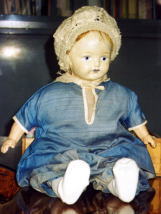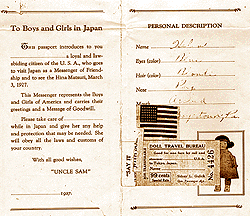|
Main Page
Children's Page |
|
1927 Doll Exchange
Historical Background Dr. Sidney L. Gulick Eiichi Shibusawa Mission of Friendship Preparations in US Receipt of Dolls in Japan Preparations in Japan Receipt of Dolls in US |
1927 Doll
Exchange
Preparations in US

|
|
|
|
|
Many American people from all states participated in the preparation of the dolls to be sent to Japan. The dolls came from churches, schools, parent-teacher associations (PTAs), various volunteer organizations, and all types of children's organizations such as the Girl Scouts. It is estimated that 2.6 million children knew of this project to send dolls to Japan for the Doll Festival (Hina Matsuri) on March 3, 1927.
American children raised funds and used their own pocket money to buy "mama" voice dolls (called this because these dolls had a device inside so they could say "mama"). The response of children and organizations across America was truly beyond expectations. In total, 12,739 Friendship Dolls were gathered together to send to Japan.
 
|
|
| Doll Passport: Each of the dolls sent to Japan carried a "friendship passport." |
|
Each doll sent to Japan had its own passport, train and steamboat ticket, and handwritten letters. The passport gave a personal description of each doll, including the place of birth and the name specified by the giver.
An attractive leaflet published by the Committee on World Friendship Among Children contained detailed suggestions on such topics as "The Kind of Dolls Wanted" and "Tickets and Passports."
The sending of dolls to Japan generated much excitement among American children, and stories and poems written to chronicle the events captivated the imagination of many young girls and boys.
Before being sent off on their long journey across the Pacific Ocean, the dolls were given going-away parties throughout the country. At many celebrations, children tried to give the dolls a taste of what life in Japan would be like. Girls dressed in kimonos and entertained their dolls with Japanese songs, games, and dances that they had learned.
The dolls were packed away in boxes, and they were uniformly addressed to Monbusho (Japanese Department of Education). Five friendly steamship companies were so kind to transport them to Japan. When the 12,739 American dolls arrived in Japan, they received an enthusiastic welcome from Japanese children.